‘Type Ia’ supernovae involve an exploding white dwarf close to its Chandrasekhar mass. For this reason, type Ia supernova explosions have almost universal properties and are an excellent tool to estimate the distance to the explosion, like a cosmic distance ladder. Collapsing massive stars will form a different kind of supernova (type II) with more variable properties, but with comparable peak luminosities.
To date, the most luminous events occur in core-collapse supernovae in a gaseous environment, when the circumstellar medium near the explosion transforms the kinetic energy into radiation and thus increases the luminosity. The origin of the circumstellar material is usually the stellar wind from the massive star’s outer layers as they’re expelled prior to the explosion.
A natural question is how will type Ia supernovae look like in a dense gaseous environment? And what is the origin of the circumstellar medium in this case? Will they also be more luminous than their standard siblings? To address this question, OzGrav researchers Evgeni Grishin, Ryosuke Hirai, and Ilya Mandel, together with an international team of scientists, studied explosions in dense accretion discs around the central regions of active galactic nuclei. They constructed an analytical model which yields the peak luminosity and lightcurve for various initial conditions, such as the accretion disc properties, the mass of the supermassive black hole, and the location and internal properties of the explosion (e.g. initial energy, ejecta mass). The model also used suites of state-of-the-art radiation hydrodynamical simulations.
The explosion generates a shock wave within the circumstellar medium, which gradually propagates outward. Eventually, the shock wave reaches a shell that is optically thin enough, such that the photons can ‘breakout’. The location of this breakout shell and the duration of the photon diffusion determine the lightcurve properties.
If the amount of the circumstellar medium is much smaller than the ejecta mass, the lightcurves look very similar to type Ia supernovae. Conversely, a very massive circumstellar mass can choke the explosion and it will not be seen. The sweet spot lies somewhere in between, where the ejecta mass is roughly comparable to the amount of circumstellar material. In the latter case, the peak luminosity 100 times bigger than the standard type Ia Supernovae, which makes it one of the brightest supernova events to date.
The research paper describing this work (Grishin et al., “Supernova explosions in active galactic nuclear discs”) was recently published in Monthly Notices of the Royal Astronomical Society. The luminous explosions may be observed in accretion discs of accretion rate, or in galaxies with smaller supermassive black hole masses where background active galactic nucleus activity will not hinder observations with advanced instruments.
The underlying physical processes of photon diffusion and shock breakout can be creatively explained with poetry:
All of a sudden, the heat is intense.
We must cool down, but the path is opaque.
Every direction around is so dense,
Which one should the photons take?
They have to break out, for God’s sake…
At first, they are stuck, no matter the way,
They sway side to side, they randomly walk.
The leader in front leads them astray,
How hogtied is this radiant flock…
But wait, do you also gaze at the shock?
The ominous furnace is starting to snap,
Its violent grip getting frail.
The path is now clear, the direction is “up!”
We’re sitting on the shock front’s tail.
We’re seizing the shock, we’ll prevail!
The shock front behind us, but we’re still out of place,
We propel with incredible might.
We keep on ascending, increasing the pace,
Any particle is now out of sight,
In this vacuum, we’re free from inside,
And can travel as fast
as the light.
Written by OzGrav researcher Evgeni Grishin, Monash University
Reference: “Supernova explosions in active galactic nuclear discs” by Evgeni Grishin, Alexey Bobrick, Ryosuke Hirai, Ilya Mandel and Hagai B Perets, 12 July 2021, Monthly Notices of the Royal Astronomical Society.
DOI: 10.1093/mnras/stab1957

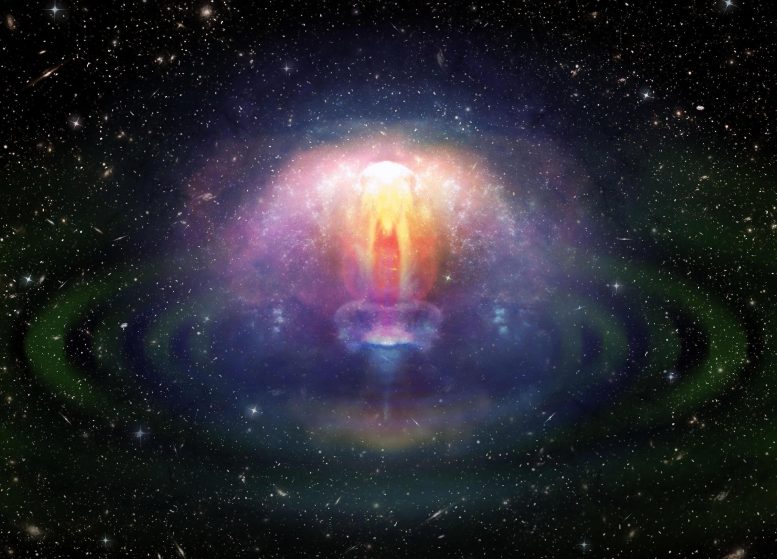

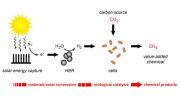

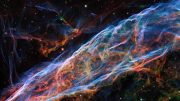

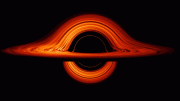

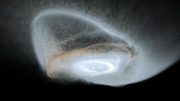
Be the first to comment on "Supernova Explosions in Dense Active Galactic Nuclear Discs"